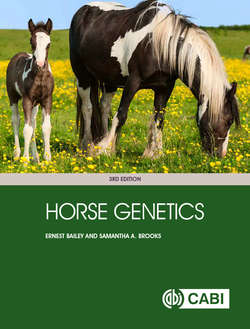Читать книгу Horse Genetics - Ernest Bailey - Страница 24
На сайте Литреса книга снята с продажи.
Domestication and selection for coat color
ОглавлениеOnce horses were domesticated, people became adept at selecting them for the characteristics they valued. This is readily apparent when we consider the diversity of coat colors in horses. Since we have discovered DNA variants associated with coat color genes (Chapters 7–13), we can investigate the coat colors of prehistoric horses using aDNA. The results of these studies suggest that early horse breeders practiced selection for coat colors. Ludwig et al. (2009) observed that DNA tests from 14,000-year-old horse bones indicated that horses were uniformly bay in color. Around the time of domestication, 4000–5500 years ago, genotypes for both bay and black were found. However, over the next few thousand years there was an increase of horses with DNA sequences characteristic of the chestnut, tobiano, and sabino coat colors. Color variation among horses occurred coincidentally with domestication and was a probable basis for early selection by man of preferred breeding stock. One might suppose that the original color provided camouflage in the wild and protect horses from predators. However, people may have found flashy white markings or dilution variants attractive and selected those horses for their breeding herd.
